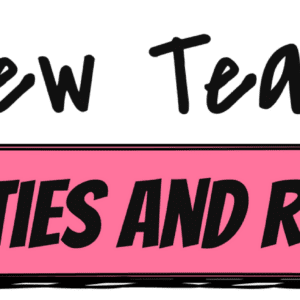Becoming a teacher involves more than just mastering subject matter and teaching methods. It also involves developing a professional identity and building a reputation within the teaching community. This is a process that takes time, effort, and self-reflection, but it is crucial for career progression, especially in a competitive environment. Here’s a guide to help graduate teachers navigate this process successfully.

See more: Navigating the Teaching Profession: A Comprehensive Guide for New Teachers.
Understanding What a Professional Identity Entails
Your professional identity as a teacher encompasses how you see yourself as a professional, your teaching philosophy, your values, and how others perceive you in the profession. It’s about how you integrate your personal attributes, beliefs, values, and practices into your professional role as an educator.
Steps to Developing Your Professional Identity
Developing your professional identity is not an overnight process. It involves continuous learning, reflection, and adaptation. Here are some steps to guide you on this journey:
- Reflect on Your Values and Beliefs: Start by reflecting on your values, beliefs, and passion for teaching. What is your teaching philosophy? What kind of teacher do you aspire to be? Your answers to these questions form the foundation of your professional identity.
- Gain Practical Experience: Practical experience helps you understand the realities of teaching. It provides you with the opportunity to apply your theoretical knowledge, refine your teaching practices, and develop your unique teaching style.
- Continual Learning: Engage in ongoing professional development. Attend workshops, seminars, and courses to stay updated with current teaching practices, educational policies, and research.
- Seek Feedback: Regularly seek feedback from your peers, mentors, and students. Feedback can provide valuable insights into your strengths and areas for improvement.
- Build a Professional Network: Networking with other educators can help you gain different perspectives, learn from others’ experiences, and build a supportive professional community.
- Contribute to the Community: Contributing to the teaching community, such as by sharing your experiences, participating in discussions, or volunteering for community initiatives, can help you build a positive reputation.
Overcoming Challenges
Building a professional identity can be challenging, particularly when you’re just starting out. Here’s how you can navigate these challenges:
- Be Patient: Developing a professional identity takes time. Be patient with yourself and remember that it’s a journey of continuous growth and learning.
- Stay Resilient: You might face setbacks and criticism along the way. Stay resilient, learn from these experiences, and use them to grow as a professional.
- Maintain Integrity: Stay true to your values and ethics. Your integrity is a key part of your professional identity and reputation.
- Balance Personal and Professional Life: Striking a balance between your personal and professional life can help prevent burnout and maintain your passion for teaching.
Final Thoughts
Developing your professional identity is a dynamic and ongoing process. It shapes how you interact with your students, how you approach teaching, and how others perceive you in the profession. By reflecting on your values and beliefs, gaining practical experience, engaging in continual learning, seeking feedback, and building a professional network, you can develop a strong professional identity and thrive in the competitive teaching environment.






